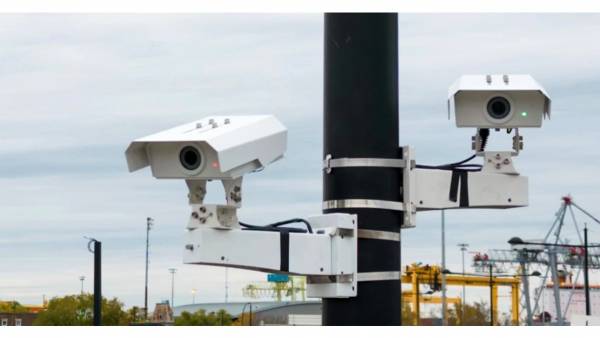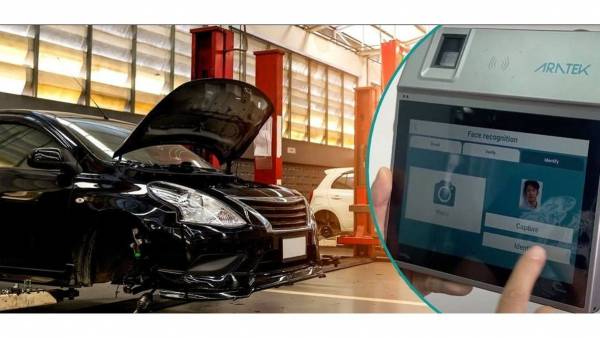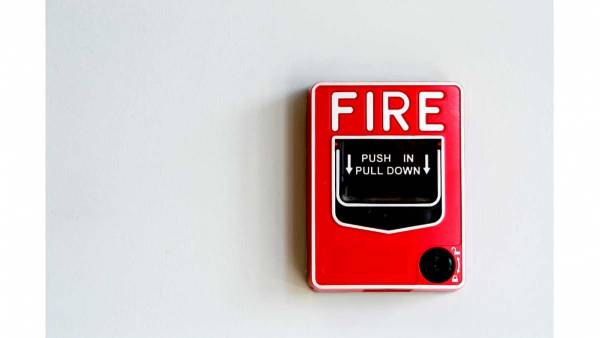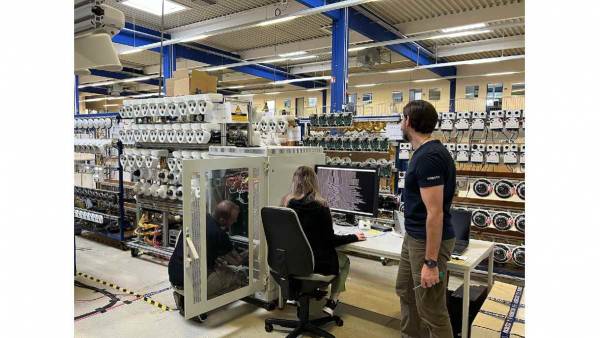by Iván Darío Quintero
On this occasion, we were supported in the realization of the article by Hiroshi Kuramochi, project engineer of the Senstar Stellar company in Brazil, Sergio Rivera, sales manager of Southwest Microwave Inc., Mexico and Eric Natuch, commercial manager of Aliara in Argentina.
The arrival of the VMD
Traditionally, cameras have been used in perimeter security systems for the concept of evaluation, that is, to verify the occurrence of events at the perimeter. However, cameras have been evolving to be considered in the concept of detection as well.
This is due to the appearance of video motion detection (VMD) software, with which images from traditional CCTV systems are being used to detect possible intrusions.
These new video detection systems not only discover pixel tampering violations, as has been done for several years, but now also these systems can recognize the sizes of objects on the screen.
For example, the same person has different sizes in the image if they are near or distant from the camera. Thus, in the past in pixel systems, moving objects could not be detected correctly and were generators of a large number of false alarms.
This software performs mathematical calculations to analyze the image of the lens and can be determined values such as the height where the camera will be installed, the type of lens to define the focal length, the type of the camera, whether it is color or black and white, frame rate, among other factors that will help the system to determine more accurately when an intrusion is being made and to avoid the issue of false alarms.
However, according to experts this is still a technology that needs to be polished and continue to be evaluated, since it still has a high rate of false alarms, for example due to snow, so it is recommended more for places where variations and environmental conditions do not exist, there the system works properly.
At the time, this technology would be in a vicious circle. As the costs are high and not yet 100% reliable, companies hardly buy them. And because sales are low, manufacturers are unable to lower their development costs. Some for the same reason, end up finishing the manufacture of the product.
The solution to this problem, says Hiroshi Kuramochi, is for manufacturers to lower costs more, so that even though the systems are not 100% reliable, there would already be a certain benefit. "I imagine that with the increase in sales, their prices will fall," said Hiroshi Kuramochi.
Selecting the right equipment
When installing a perimeter detection system, the probability of detection of a real alarm and the lower generation of false alarms becomes a key factor, therefore criteria such as the selection of the appropriate technology for the particular site must be taken into account; that is, consider: particular risks and circumstances of the environment, try to define the threat, make an assessment and give an effective response, verify that the supplier and integrator have remained in the area in such a way that timely spare parts and maintenance can be easily accessed. {mospagebreak}
Generation of false alarms
The generation of false alarms in the devices of the intrusion detection system is an evil that has been presented for a long time, Sergio Rivera, Hiroshi Kuramochi and Eric Natuch helped us to illustrate the most common reasons why these occur.
But before going into analyzing the different factors that can influence the issue of false alarms originating in the perimeter, I want to cite a very valid assessment of the engineer Eric Natuch, who told VENTAS DE SEGURIDAD that "the term false alarm is not correct, because after all the (perimeter) system detects the action on it".
Although this makes a lot of sense, we must enter to analyze several factors that in fact can contribute to the generation of false alarms, aspects such as poor installation, the wrong choice of equipment or lack of maintenance, are some of the components, which according to experts, they commonly contribute to the generation of false alarms.
From the beginning, when you start installing the system you can be contributing to generate false alarms, because one of the main reasons for them to be generated is the incorrect selection of the sensor; if you buy a sensor that is not designed to work under the conditions of the site to which it will be subjected, obviously it will not give good results and yes, many false alarms.
In this order of ideas, false alarms are presented in many cases also by a bad installation of the system, accompanied by a deficient calibration of the same.
Added to the above is the lack of maintenance, because many users think, according to Rivera, "that putting a perimeter detection equipment is simply installing it and leaving it working only for years and this is not possible", it is necessary to take the commitment, after the purchase of a perimeter security equipment is made, to give maintenance, perhaps not so much to the sensor, because most of them require little maintenance, but to the site as such.
According to Rivera himself "many times it is also the planning with which the installation is made, for example: it is intended to use infrared sensors in a large perimeter, in places where there is a high fog index, fog greatly affects active infrared sensors, so they are cases that must be studied very well before installing them and I do not want to say that infrared sensors they do not work, they work very well, the problem is that if they are not applied in the right way, it will generate more headaches for the user than benefit, the important point is that there are several things that must be considered when installing a sensor and offering a solution from the point of view of a manufacturer ".
It is also important to avoid false alarms to make a detailed study of the site to be protected, most of the time what happens is that the user ends up choosing a cheaper solution and unfortunately not the right solution. Then, according to experts, that's where the problems come, saving the cheap is expensive. Sometimes the sensor is the right one, but it is cheap, which causes a distrust in the sensor, why? Because the rate of false alarms is so high that the person ends up believing that the system has been turned off losing credibility in the system and demeriting the installation, for that, it is not even worth installing a security system, because it would not be reliable. This, according to Rivera himself. {mospagebreak}
The truth, according to experts, there is not a single perimeter security system that does not generate false alarms, all systems can give false alarms for some event, but what it is about is to reduce that index through the correct application of the sensor, as well as the treatment and preparation of the site where it is to be installed; in addition to proper installation, proper calibration and necessary periodic maintenance. There is no single sensor that gives a zero probability of detection and false alarm index.
Trends and analysis of the Latin American market
Sadly, the South American market has been affected by the tendency of many users to go for the cheapest, for the cheapest, not for an adequate solution to the needs. "In perimeter security, things are either done well at once or better not done, it is an important premise that we must consider," Rivera said.
For Eric Natuch, the electronic security industry has been growing steadily for several years in Argentina, mainly due to factors related to the growth of the national economy and the increase in insecurity rates. Natuch agrees on this with industry professionals in all latitudes of Latin America, who on several occasions have expressed a similar perception of their countries, in interviews with VENTAS DE SEGURIDAD.
However, in Latin America there is still difficulty with high costs, so companies buy for low prices and not for the quality of technology.
In addition, according to experts, the concept of perimeter security is almost a philosophy, but it is still recent and little adopted by people in the region, who buy without researching existing technologies.
In any case, for Sergio Rivera, perimeter security systems have a very interesting future, what is expected is that there are systems that are simpler in their calibration, easier to install, flexible in terms of their application and that allow to locate intruders with a high degree of precision, instead of working based on zones of 100, 200, 300 meters or more, in order to improve the evaluation and response time, obviously there is also simplicity and lower consumption of electric current, greater reliability and more efficient costs.
In the same way, Rivera thinks that the whole issue of perimeter security has remained a little in the middle of the light, it has been a little dark for many years and really with the passage of time it has become more important, "but what I would like to highlight is that it would be very important, that both the user and the system integrator will work together, so that the moment a user decides to protect a site, they are really aware of what technology and how they can apply it correctly to the system." {mospagebreak}
"Unfortunately, because of the experience I have had, a little more than ten years working in the field, most of the projects are done based on price and not on the real needs of the user, greatly demeriting the type of systems that are sometimes installed and the way they are installed. So, you have to become very aware, that when you have a need, it is about solving the problem, not simply installing a perimeter security system, but evaluating procedures, educating and training people to be able to carry it out and maintain the equipment, so that the systems can work satisfactorily, because if this does not happen instead of being an investment, it will be an expense," Rivera said.
"An interesting measure for good facilities would be to create some kind of regulation or standards in the international arena for sensors, which does not exist to date; there is, for example, for the fire part a code by international organizations such as the FPA, which indicates the type of equipment that should be used, some distance restrictions, in which media they should be used and in which means they should not. That does not exist in perimeter security, there is no standardization of protocols, nor a standardization of communication, so each manufacturer makes its own system. It would be interesting to have in the future some type of organization or organization that brings together all manufacturers and obviously, that users, both as integrators, have where to access information as well as data about what has been perimeter security, "said engineer Rivera.

























Leave your comment